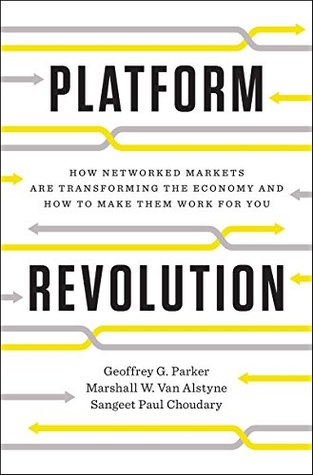More on this book
Community
Kindle Notes & Highlights
Read between
March 2 - April 4, 2021
From the time of launch, a platform should be architected in a manner that affords it control over possible sources of monetization.
Calibrating the right level of openness is undoubtedly one of the most complex as well as one of the most critical decisions that a platform business must make.
Then he attacked corruption. To make graft less attractive, he raised the salaries of civil servants to match those of similar workers in the private sector. New public servants had to wear white as a sign of purity when they assumed office. The anti-corruption rules were enforced strictly: the minister of state for the environment, a staunch supporter of Yew, committed suicide rather than face prosecution on bribery charges.
Similarly, when a troll on a user-generated content site has his account deleted, he often returns under a new identity. Smart platform managers started making nuisance posts invisible to everyone but the troll. Unable to inflame community sentiment, the troll retreated.
Nir Eyal, who has worked in both advertising and game development, describes behavior design as a recurring sequence of trigger, action, reward, and investment.
Finally, the platform asks the member to make an investment of time, data, social capital, or money. The investment deepens the participant’s commitment and reinforces the behavior pattern platform managers want to see.
Leaders have always needed to focus on a handful of key metrics to guide them. This has been true for thousands of years in every domain of human activity, from business to government to warfare.
A successful pipeline business is one that produces goods and services with minimal waste of resources and then delivers a large quantity of these goods and services to customers through well-managed marketing, sales, and distribution systems, thereby generating revenues that are more than sufficient to recoup costs and produce profits to reward investors and finance future growth.
the most important metrics are those that quantify the success of the platform in fostering sustainable repetition of desirable interactions. The end result: positive network effects and the creation of enormous value for everyone involved, including the users of the platform as well as the sponsors and managers of the platform.
for example, the ratio of active users, which is calculated by dividing the number of active users by the number of total users, or the rate of growth in active users, which is calculated by dividing the number of new active users by the number of total active users.
As a business leader you need to figure out the metric that matters most for your company and understand that the more you measure, the less prioritized you’ll be. Don’t fall into the trap of trying to measure everything. What I’ve learned is that in the early days, what matters most is having customers who love and use your product. Figure out the one or two best measures to determine this.
Platform competition requires treating buyers and suppliers not as separate threats to be subjugated but as value-creating partners to be wooed, celebrated, and encouraged to play multiple roles.
Keeping Flash off the iPhone, Jobs claimed, would preserve the quality of the Apple user experience.17
The real reasons were much deeper and more strategic. Adobe had designed Flash developer tools to allow content and program porting from Apple iOS to Google Android and to web pages more generally. Apps developed in Flash could multihome, reducing the iPhone’s distinctiveness. Adobe also released extensions that allowed in-app purchases. By allowing developers to take interactions off the iTunes platform, Flash would cause Apple to lose its 30 percent cut of every interaction as well as control over the associated usage data—information that provides valuable clues concerning trends in the
...more
A platform business need not own all the inimitable resources in its ecosystem, but it should seek to own the resources whose value is greatest.
Data analytics can thus significantly augment the capabilities of both the platform company and its ecosystem partners, making the platform more successful and greatly increasing its ability to generate value for users.
If competitors don’t have the data, they can’t create the value—which means they can’t create the interactions, which further limits their access to the data.
But Facebook resisted the temptation—and wisely so. Game development is notoriously unpredictable; even the most successful games flame out after a few years, and there’s no guarantee that another hit will follow.
Vimeo’s competitive stance in relation to YouTube resembles that of many traditional businesses that coexist with a market-dominating rival by identifying a specialized niche and creating a higher-end product designed to cater to that audience.
Thanks to positive network effects, the value created and the profit margins enjoyed by the company both increase as more users join the ecosystem.21 This is why firms with network effects can enjoy a 10x multiple in value relative to other firms that have comparable revenues but lack network effects.
In the world of platforms, competition becomes less important that cooperation and co-creation. Control of relationships becomes more important than control of resources.
Among the methods that platforms use to compete with one another are preventing multihoming by limiting platform access; fostering innovation, then capturing its value; leveraging the value of information; nurturing partnerships rather than pursuing mergers and acquisitions; platform envelopment; and enhanced platform design.
Change often provokes anxiety, and there’s an understandable impulse to slow the pace of technological and economic innovation in order to fend off unforeseeable consequences that may be harmful.
It’s a pattern we’ve seen being played out in every corner of the world of platforms: power, which once flowed in a single direction from a central source, is increasingly shared and controlled by millions of market participants.
Industries that are most prone to platform transformation in the near future include those that are information-intensive, those with unscalable gatekeepers, those that are highly fragmented, and those characterized by extreme information asymmetries.


